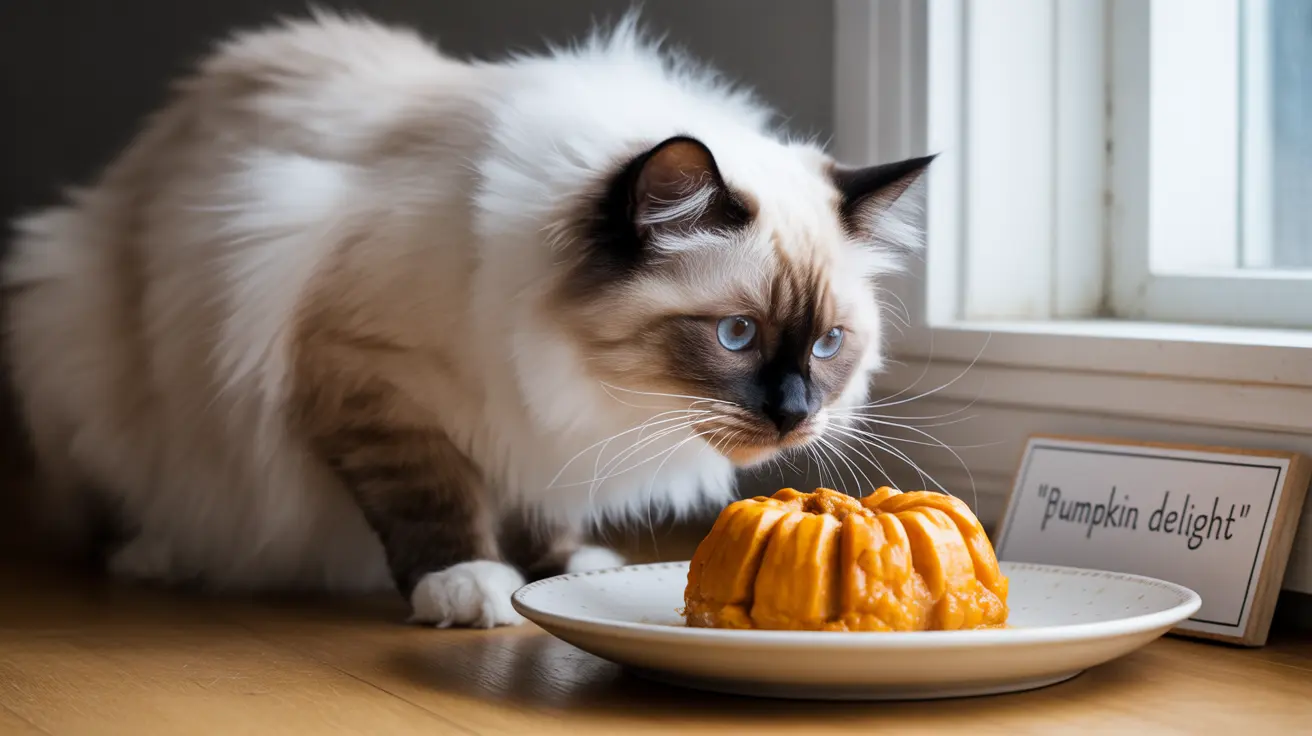Safe Vegetables for Cats: The Essential List
Fiber-Rich Options
Several vegetables provide beneficial fiber that can support your cat's digestive health:
- Green beans: High in fiber and protein, excellent for weight management
- Pumpkin: Great for digestive issues, helps with both constipation and diarrhea
- Butternut squash: Rich in vitamins and fiber, similar benefits to pumpkin
Vitamin-Rich Choices
These vegetables offer important vitamins and minerals:
- Carrots (cooked and mashed): Rich in beta carotene for eye health
- Steamed broccoli: High in antioxidants and vitamin C
- Sweet potato (cooked): Excellent source of vitamin A
Proper Preparation Methods
Cooking and Serving
Most vegetables should be thoroughly cooked before serving to your cat:
- Steam or boil until soft
- Remove all seasonings, salt, and oils
- Cut into small, manageable pieces
- Puree or mash for easier digestion
Portion Control
Follow these guidelines for safe serving sizes:
- Limit vegetables to 10% of daily caloric intake
- Start with 1-2 teaspoons per serving
- Offer vegetables no more than twice per week
- Monitor for any digestive changes
Health Benefits and Considerations
Potential Benefits
When properly prepared and served, vegetables can provide:
- Additional fiber for digestive health
- Hydration through water content
- Weight management support
- Natural vitamins and minerals
Important Precautions
Keep these safety considerations in mind:
- Always introduce new vegetables gradually
- Watch for signs of allergic reactions
- Avoid toxic vegetables like onions and garlic
- Consult your veterinarian before making dietary changes
Vegetables to Avoid
Toxic Options
Never feed your cat these dangerous vegetables:
- Onions and garlic (all forms)
- Raw or green potatoes
- Wild mushrooms
- Unripe tomatoes
Frequently Asked Questions
What vegetables are safe for cats to eat as occasional treats?
Safe vegetables include cooked carrots, green beans, pumpkin, steamed broccoli, and cucumber. These should always be properly prepared and served in small portions.
How should I prepare vegetables to safely feed them to my cat?
Most vegetables should be thoroughly cooked, cut into small pieces or pureed, and served plain without any seasonings, oils, or salt. Remove any tough skins or peels before serving.
Can feeding vegetables like pumpkin or green beans help with my cat's digestion?
Yes, both pumpkin and green beans can help with digestive issues. Pumpkin is particularly effective for both constipation and diarrhea due to its fiber content, while green beans can aid in weight management and regular digestion.
Which vegetables are toxic or harmful to cats and should be avoided?
Cats should never eat onions, garlic, chives, raw potatoes, or wild mushrooms. These vegetables can be toxic and cause serious health problems including anemia and organ damage.
How much vegetable content is appropriate in a cat's diet without causing digestive issues?
Vegetables should not exceed 10% of your cat's daily caloric intake. Start with 1-2 teaspoons once or twice a week and monitor your cat's reaction. Some cats may be more sensitive to vegetables than others.
Conclusion
While vegetables should never replace a cat's primary meat-based diet, certain vegetables can be safe and beneficial when offered as occasional treats. Always introduce new vegetables slowly, prepare them properly, and monitor your cat's response. When in doubt, consult with your veterinarian about incorporating vegetables into your cat's diet.






